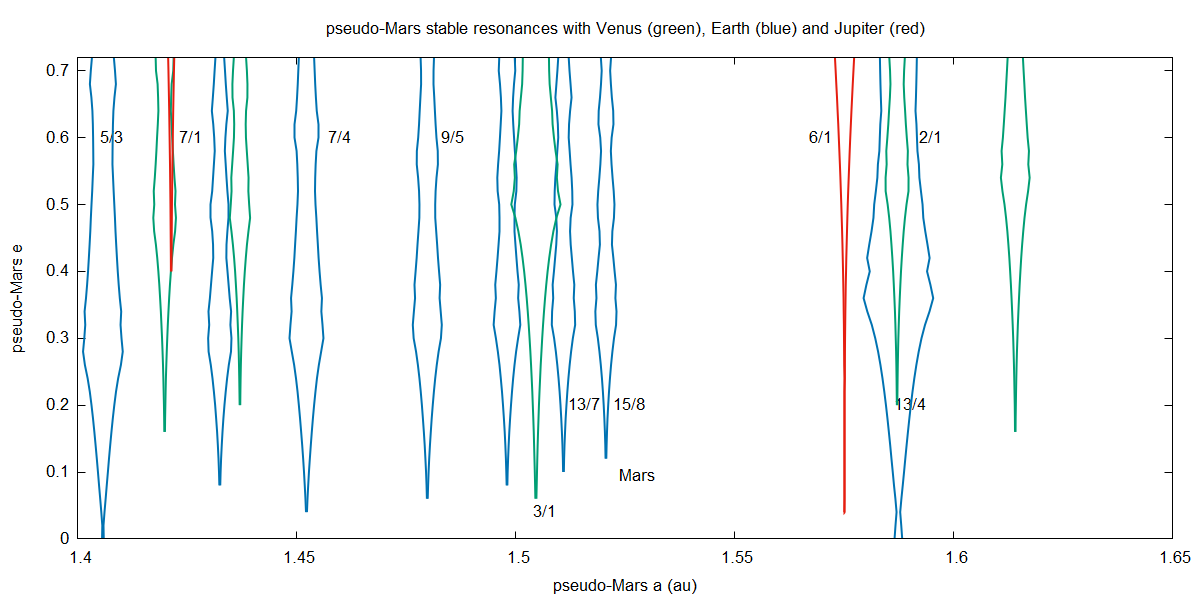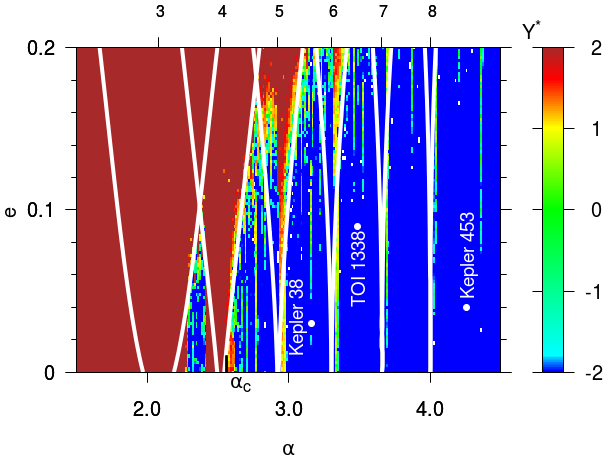
Example of what the program generates. Taking a "pseudo" planet Mars moving its position in semi-major axis and eccentricity, the code calculates the stable widths of the resonances with Venus (green), Earth (blue) and Jupiter (red). Two interesting things: a) the resonances with Venus and Earth are stronger, and b) note that Mars is located in a region relatively void of strong resonances (its actual position is indicated). Note: "stable width" means maximum resonance width avoiding close encounters to less than 3 mutual Hill sphere radius. Input and output files for generating this plot here. |

Another example. Megno map in the (a,e) plane for a planet in resonance with a binary star. Dark blue corresponds to more regular orbits, and lighter tones of green indicate increasingly chaotic motion. Brown corresponds to ejections. The libration widths of the most relevant MMRs determined with the model are plotted as white lines. The top scale indicates the positions of N/1 resonances with respect to the mean motion of the binary. Additionally, we plot the position of some similar circumbinary systems. Taken from Gallardo, Beauge and Giuppone (2021). |